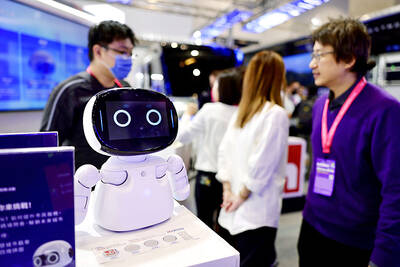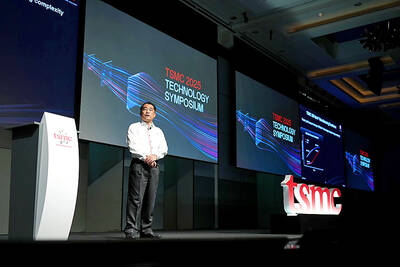Taiwan and China’s national palace museums are planning a joint exhibition of artifacts from the period of Emperor Yongzheng (雍正), who reigned during the Qing Dynasty, at the Taipei National Palace Museum in October.
Museum director Chou Kung-hsin (周功鑫) said yesterday she would go to China on Saturday to hold talks with officials from the National Palace Museum in Beijing regarding cooperation and exchanges between the two institutions.
Chou said she would discuss the possibility of exhibiting a portrait of Emperor Yongzheng from Beijing’s museum during the visit.
However, the Taiwanese government said on Sunday it would only allow artifacts to be displayed in China if Beijing guarantees to return the treasures.
Premier Liu Chao-shiuan (劉兆玄) said China must sign the Law of Guaranteed Return, promising to return the treasures at the end of the exhibition.
“Premier Liu supports holding joint exhibitions, but he said the greatest concern was the safety of the treasures. We will therefore request that China sign the Law of Guaranteed Return before we can send any artifacts to China,” a government official said.
After losing the Civil War in 1949, the Chinese Nationalist Party (KMT) government took the best artifacts from Beijing and a museum in Nanjing — a total of 650,000 pieces — and brought them to Taipei.
China considers the artwork to be part of Chinese heritage. Fearing that Beijing could seek to impound the museum’s artifacts through its diplomatic ties with foreign countries, Taiwan has only allowed the National Palace Museum to send treasures abroad on a few occasions.
Last February, the museum held an exhibition in Austria following two years of negotiations with Vienna to sign the Law of Guaranteed Return.
In response to speculation that China would not conduct the exchanges on a state-to-state basis, Chou said the museum did not hope Beijing would only establish laws regarding exchange with Taipei, but rather that it establish laws based on international cultural exchange standards.
The collections housed at the museum in Taipei belong to the country and the world, so an agreement between the two governments is a basic condition on lending artifacts for exhibition, she said.
With Beijing museum director Zheng Xinmiao (鄭欣淼) scheduled to visit Taiwan next month, Chou’s visit to Beijing will only be a preliminary exchange of ideas and not to sign contracts or memos, Chou said.

DEMOGRAPHICS: Robotics is the most promising answer to looming labor woes, the long-term care system and national contingency response, an official said Taiwan is to launch a five-year plan to boost the robotics industry in a bid to address labor shortages stemming from a declining and aging population, the Executive Yuan said yesterday. The government approved the initiative, dubbed the Smart Robotics Industry Promotion Plan, via executive order, senior officials told a post-Cabinet meeting news conference in Taipei. Taiwan’s population decline would strain the economy and the nation’s ability to care for vulnerable and elderly people, said Peter Hong (洪樂文), who heads the National Science and Technology Council’s (NSTC) Department of Engineering and Technologies. Projections show that the proportion of Taiwanese 65 or older would

Nvidia Corp yesterday unveiled its new high-speed interconnect technology, NVLink Fusion, with Taiwanese application-specific IC (ASIC) designers Alchip Technologies Ltd (世芯) and MediaTek Inc (聯發科) among the first to adopt the technology to help build semi-custom artificial intelligence (AI) infrastructure for hyperscalers. Nvidia has opened its technology to outside users, as hyperscalers and cloud service providers are building their own cost-effective AI chips, or accelerators, used in AI servers by leveraging ASIC firms’ designing capabilities to reduce their dependence on Nvidia. Previously, NVLink technology was only available for Nvidia’s own AI platform. “NVLink Fusion opens Nvidia’s AI platform and rich ecosystem for

Taiwan Semiconductor Manufacturing Co (TSMC, 台積電) yesterday said it is building nine new advanced wafer manufacturing and packaging factories this year, accelerating its expansion amid strong demand for high-performance computing (HPC) and artificial intelligence (AI) applications. The chipmaker built on average five factories per year from 2021 to last year and three from 2017 to 2020, TSMC vice president of advanced technology and mask engineering T.S. Chang (張宗生) said at the company’s annual technology symposium in Hsinchu City. “We are quickening our pace even faster in 2025. We plan to build nine new factories, including eight wafer fabrication plants and one advanced

‘WORLD’S LOSS’: Taiwan’s exclusion robs the world of the benefits it could get from one of the foremost practitioners of disease prevention and public health, Minister Chiu said Taiwan should be allowed to join the World Health Assembly (WHA) as an irreplaceable contributor to global health and disease prevention efforts, Minister of Foreign Affairs Lin Chia-lung (林佳龍) said yesterday. He made the comment at a news conference in Taipei, hours before a Taiwanese delegation was to depart for Geneva, Switzerland, seeking to meet with foreign representatives for a bilateral meeting on the sidelines of the WHA, the WHO’s annual decisionmaking meeting, which would be held from Monday next week to May 27. As of yesterday, Taiwan had yet to receive an invitation. Taiwan has much to offer to the international community’s